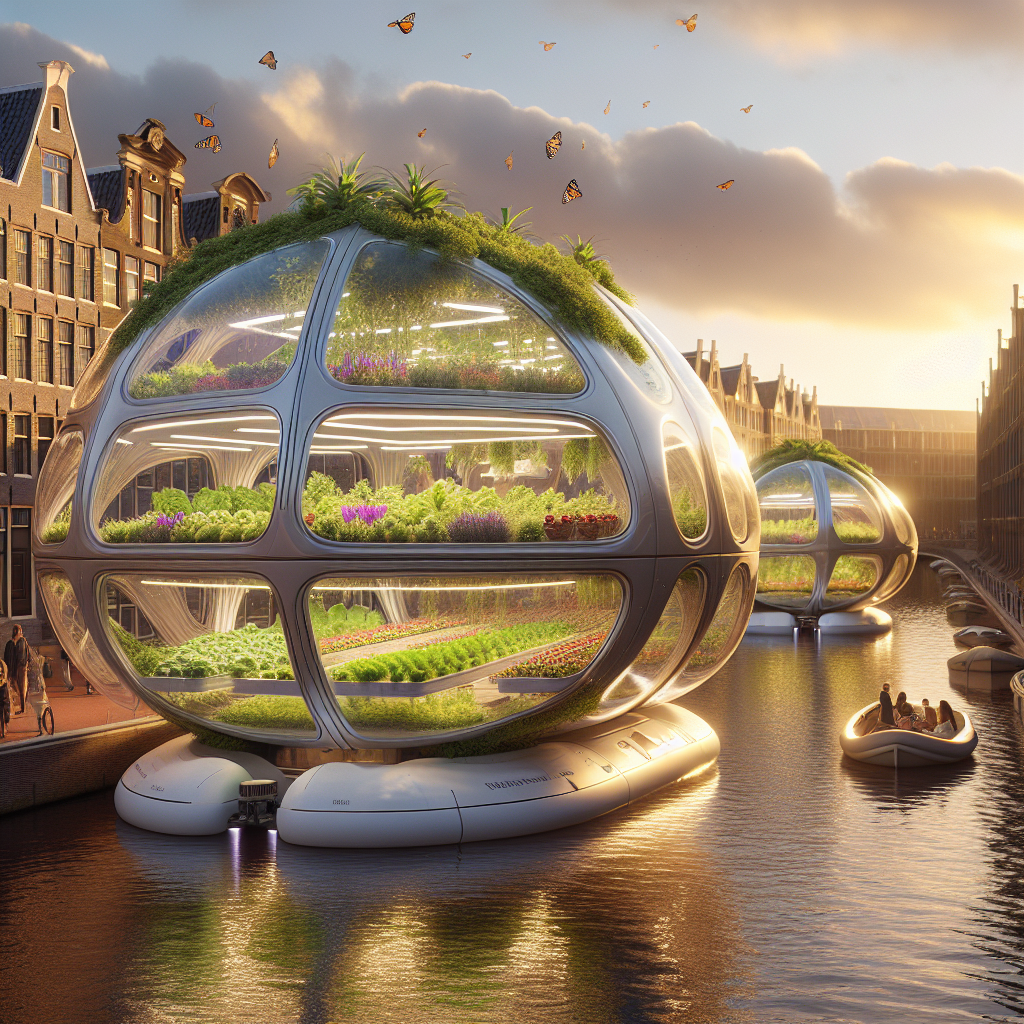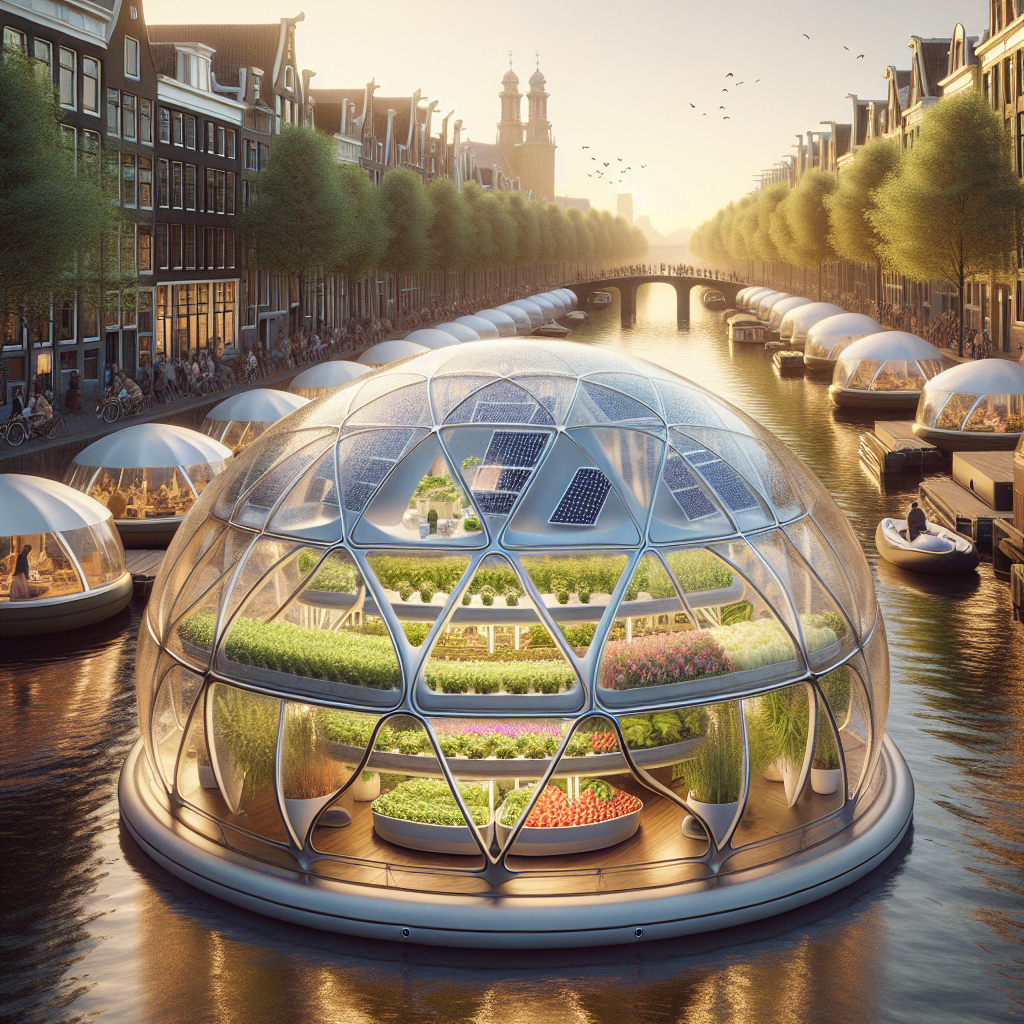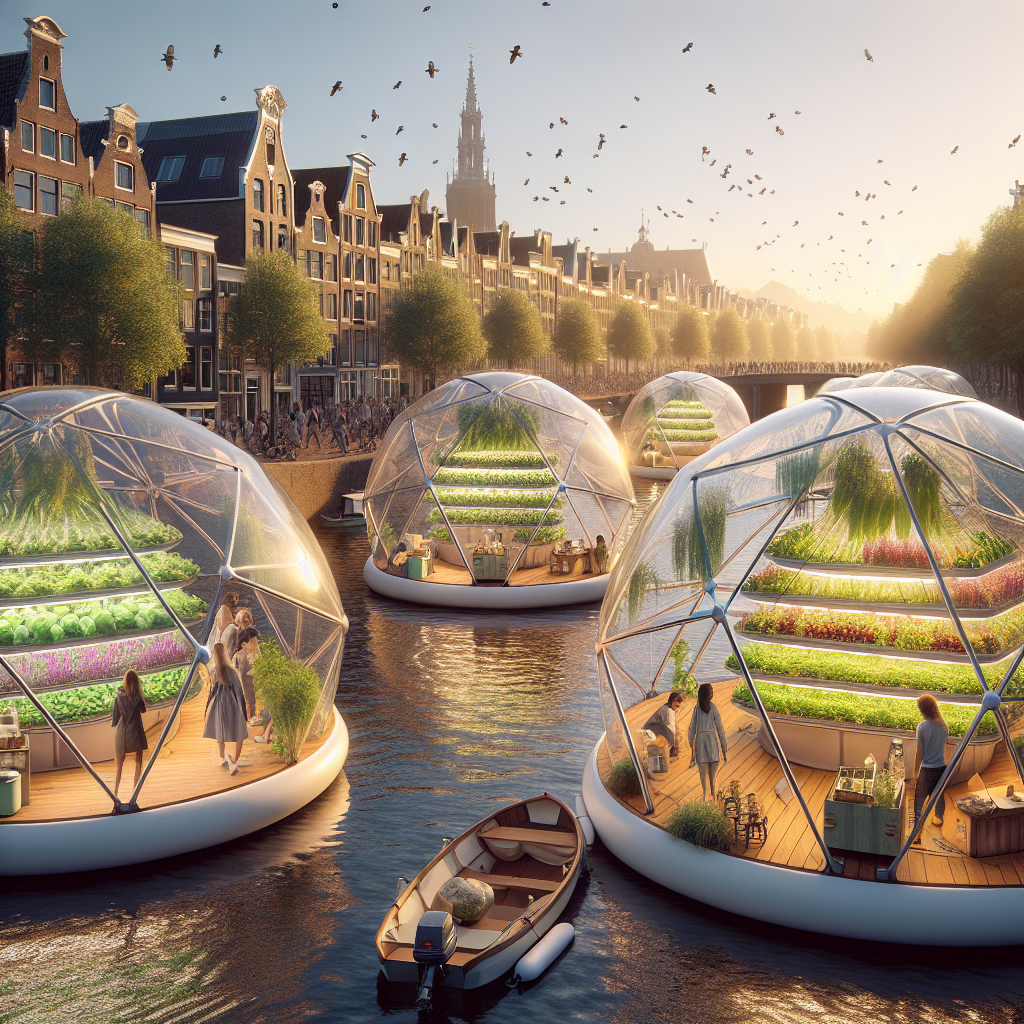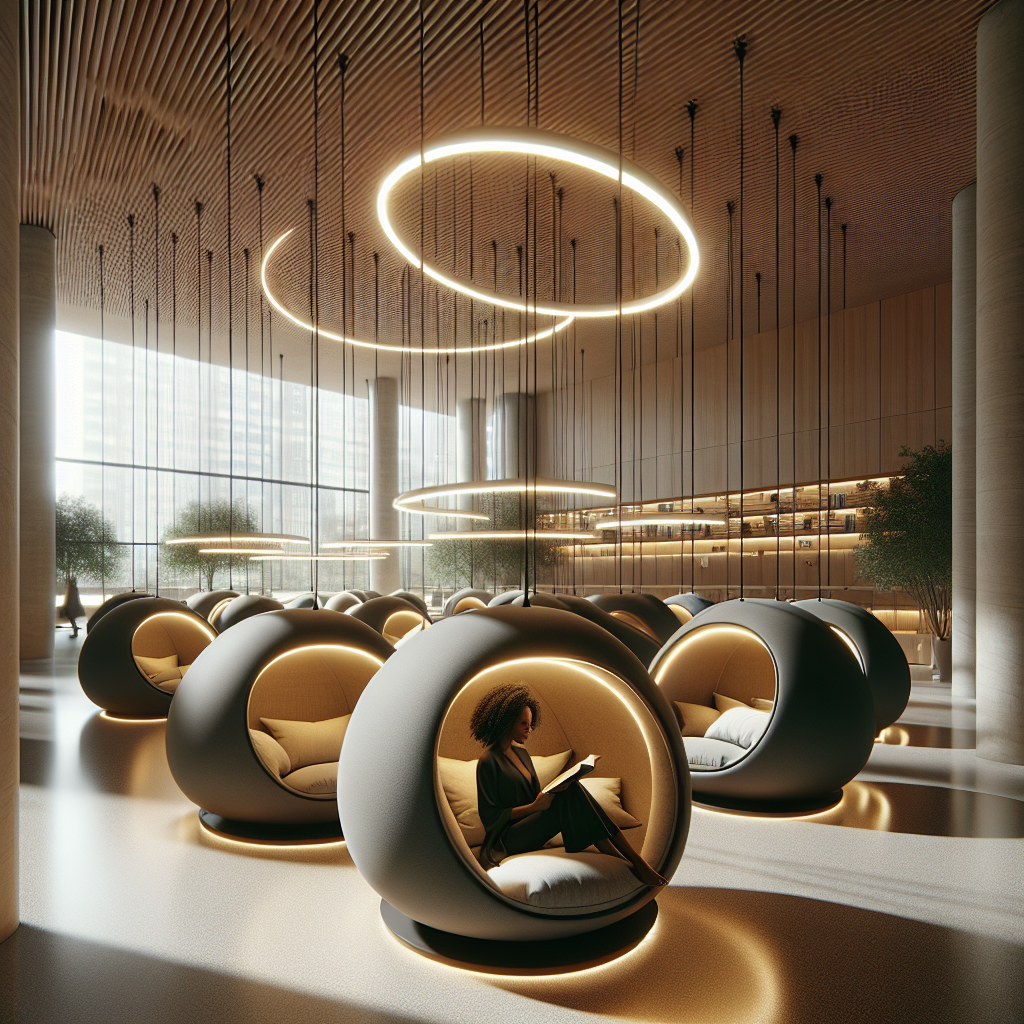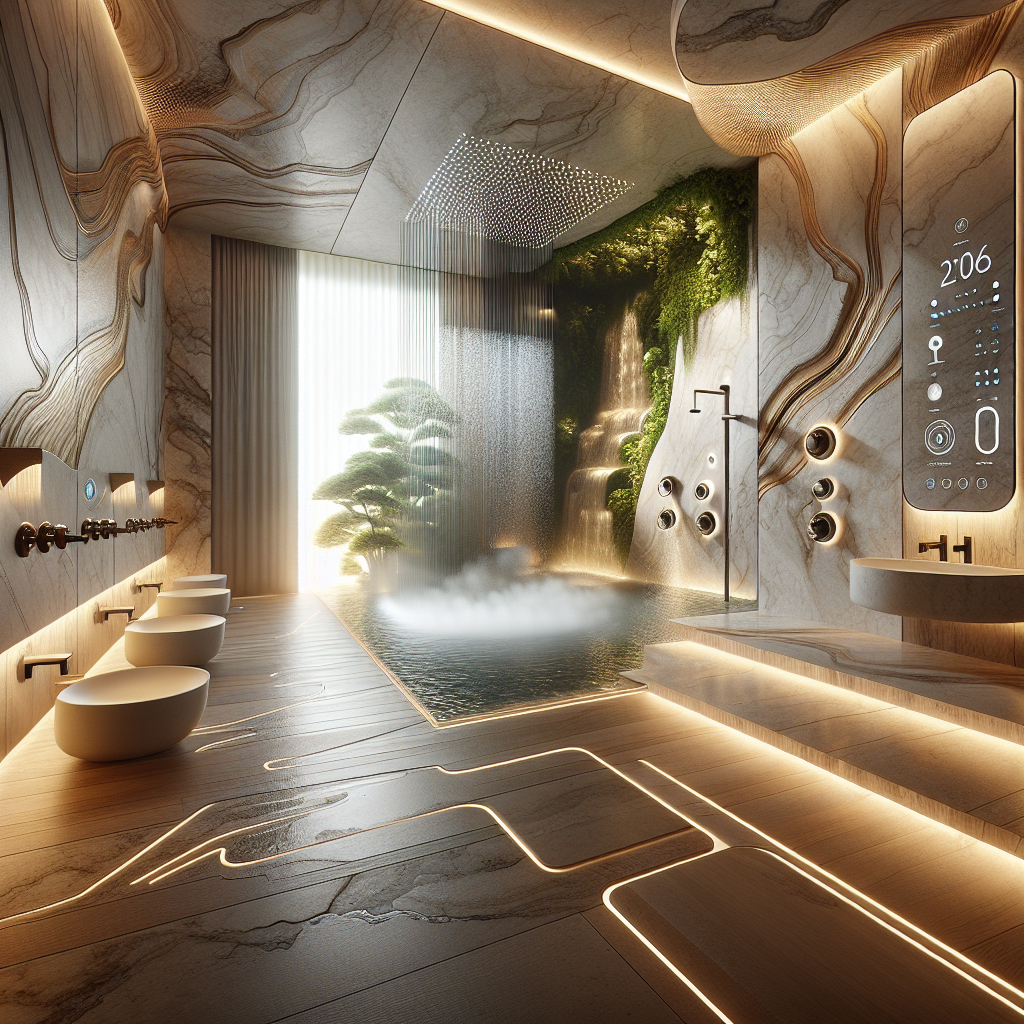Floating greenhouse pods: hydroponic farming above city canals
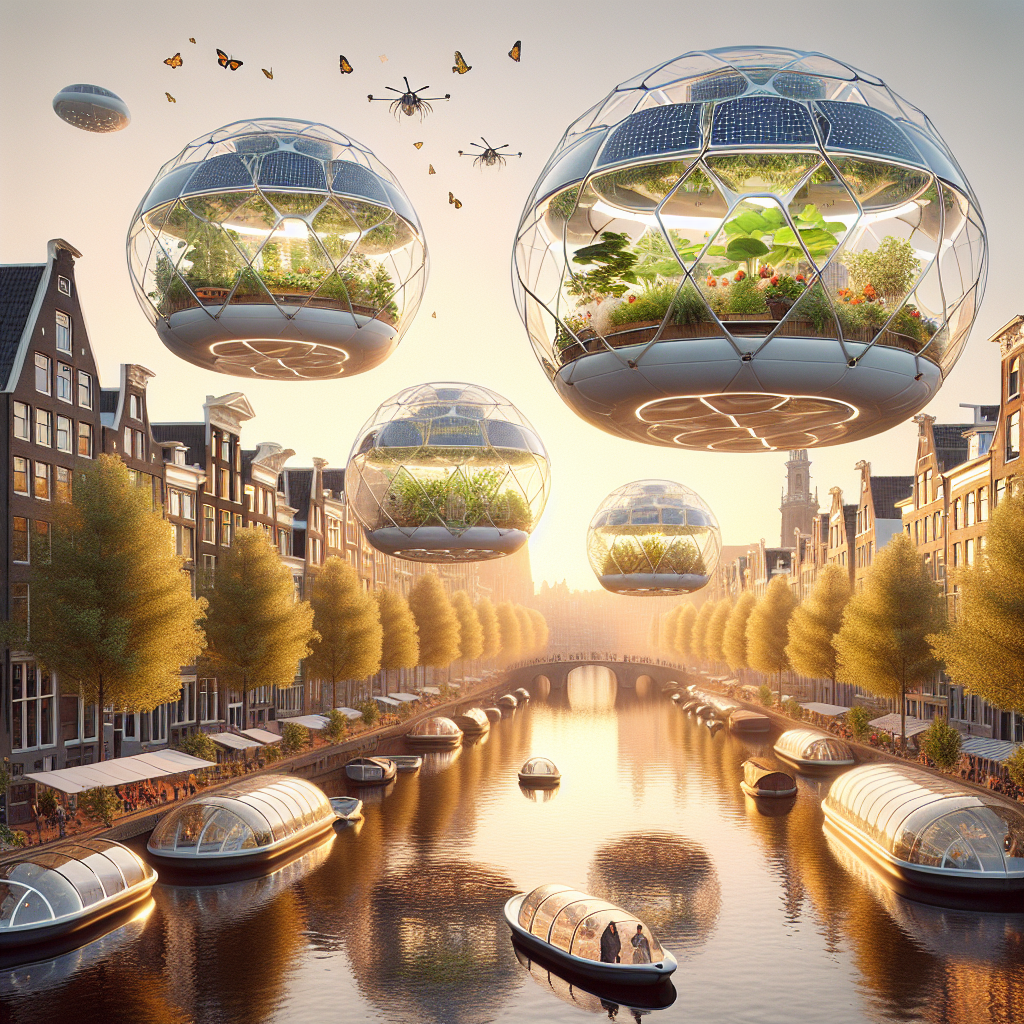
Floating Greenhouse Pods: Hydroponic Farming Above City Canals
As urban centers continue to expand, the quest for sustainable and innovative solutions to feed city populations becomes increasingly urgent. Enter the visionary concept of floating greenhouse pods, an architectural marvel that seamlessly integrates hydroponic farming with urban waterways. Hovering gracefully above city canals, these pods are redefining urban agriculture, offering a glimpse into a future where food production and city life coexist harmoniously.
Architectural Ingenuity Meets Sustainable Agriculture
Imagine strolling along Amsterdam’s picturesque canals or Venice’s iconic waterways, where translucent, dome-shaped structures float serenely above the water’s surface. These greenhouse pods, designed with cutting-edge architectural precision, encapsulate lush gardens suspended within transparent, geodesic frameworks. Crafted from lightweight, sustainable materials such as recycled aluminum and biodegradable polymers, the pods are both aesthetically captivating and environmentally responsible.
Their curved, aerodynamic forms not only enhance visual appeal but also optimize sunlight absorption, creating ideal conditions for plant growth. Inside, hydroponic systems eliminate the need for soil, allowing plants to thrive in nutrient-rich water solutions. This innovative approach significantly reduces water usage compared to traditional farming methods, making it an ideal solution for water-scarce urban environments.
Hydroponics: Cultivating Crops Without Soil
At the heart of these floating greenhouse pods lies hydroponic farming, a soil-less cultivation technique gaining momentum worldwide. By delivering nutrients directly to plant roots suspended in water, hydroponics ensures rapid growth rates, higher yields, and minimal resource consumption. According to recent studies, hydroponic systems use up to 90% less water than conventional agriculture, a crucial advantage in densely populated cities grappling with water scarcity (read more about hydroponic farming here).
Inside the pods, meticulously designed vertical gardens maximize space efficiency, allowing multiple crop layers to flourish simultaneously. From vibrant leafy greens and aromatic herbs to succulent strawberries and tomatoes, these urban farms offer fresh, locally-grown produce year-round, dramatically reducing transportation emissions and enhancing food security.
Integrating Nature into Urban Landscapes
Beyond their agricultural prowess, floating greenhouse pods embody the principles of biophilic design, a philosophy emphasizing the integration of natural elements into built environments to enhance human well-being (explore biophilic design further). Their transparent structures invite natural light, creating serene, plant-filled interiors that foster tranquility and connection with nature. For city dwellers, these floating oases offer respite from urban stress, promoting mental health and community engagement.
Moreover, the pods contribute to urban biodiversity by providing habitats for pollinators such as bees and butterflies. Integrated pollinator gardens within the pods not only enhance crop productivity but also support vital ecological networks within urban ecosystems.
Case Study: Amsterdam’s Floating Farm Initiative
Amsterdam, renowned for its innovative urban planning and extensive canal system, has emerged as a pioneer in adopting floating greenhouse pods. The city’s Floating Farm Initiative, launched in 2024, introduced a series of hydroponic pods strategically positioned along its waterways. Designed by the acclaimed Dutch architectural firm Studio Drift, these pods blend seamlessly with Amsterdam’s historic architecture, their sleek, minimalist aesthetics complementing the city’s visual identity.
Each pod features automated climate control systems powered by solar panels embedded in their translucent roofs, ensuring optimal growing conditions regardless of external weather fluctuations. Residents can access fresh produce directly from floating markets attached to the pods, fostering a sustainable, community-driven food economy.
Environmental and Social Benefits
The adoption of floating greenhouse pods offers multifaceted benefits, extending beyond food production. By utilizing urban waterways, these pods alleviate pressure on scarce urban land, enabling cities to reclaim valuable space for housing, recreation, and green areas. Furthermore, their modular, scalable design allows for rapid deployment and adaptation to varying urban contexts, making them ideal for cities facing rapid population growth or limited arable land.
Socially, floating greenhouse pods encourage community involvement and education. Public access to these innovative farms provides opportunities for educational programs, workshops, and community gardening initiatives, fostering environmental awareness and sustainable living practices among urban populations.
Challenges and Future Prospects
Despite their promising potential, floating greenhouse pods face several challenges that must be addressed to ensure widespread adoption. Structural stability, especially in regions prone to extreme weather events, requires meticulous engineering and resilient design solutions (learn more about resilient building design). Additionally, navigating regulatory frameworks governing urban waterways and ensuring minimal ecological disruption are critical considerations for city planners and architects.
Advancements in materials science, particularly biodegradable and self-healing materials, hold promise for enhancing the durability and sustainability of these structures. Moreover, integrating smart technologies such as IoT sensors and AI-driven monitoring systems can optimize resource usage, crop yields, and maintenance efficiency, paving the way for smarter, more sustainable urban agriculture (discover smart technology applications).
A Visionary Blueprint for Urban Agriculture
Floating greenhouse pods represent a visionary blueprint for the future of urban agriculture, merging architectural innovation, sustainable farming practices, and biophilic design principles. As cities worldwide grapple with the dual challenges of population growth and environmental sustainability, these floating structures offer a compelling solution, transforming urban waterways into thriving, productive ecosystems.
From Amsterdam’s pioneering initiatives to potential applications in Venice, London, and beyond, floating greenhouse pods exemplify the transformative power of design and architecture in addressing contemporary urban challenges. By embracing these innovative structures, cities can cultivate resilience, sustainability, and community well-being, charting a path toward a greener, more harmonious urban future.
Embracing the Future of Urban Living
As we stand at the intersection of architectural ingenuity and environmental stewardship, floating greenhouse pods symbolize a bold step forward in redefining urban living. Their graceful forms, sustainable practices, and profound social impacts position them as essential components of tomorrow’s cities, offering a glimpse into a future where architecture and agriculture unite to nourish both body and soul.
In an era marked by rapid urbanization and environmental uncertainty, embracing such visionary concepts becomes not merely desirable but imperative. Floating greenhouse pods remind us that innovation, creativity, and sustainability can coexist beautifully, inspiring us to reimagine the possibilities of urban design and agriculture for generations to come.
